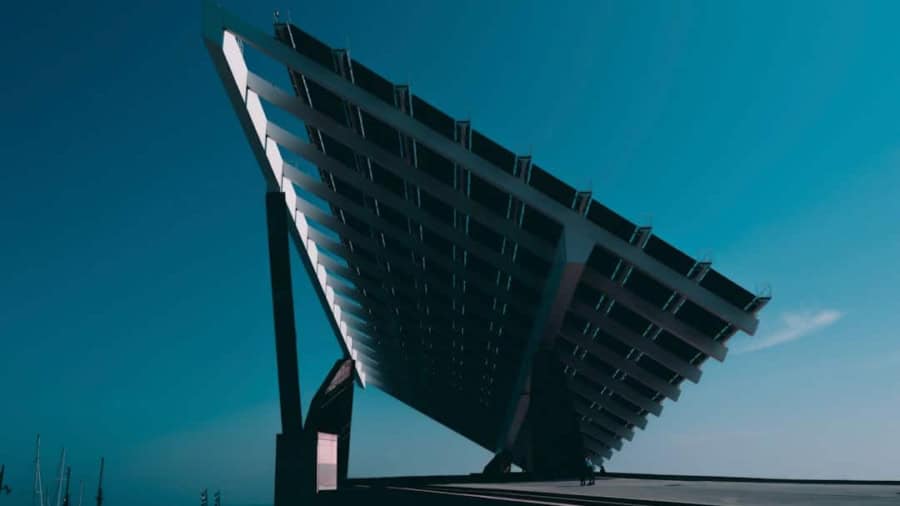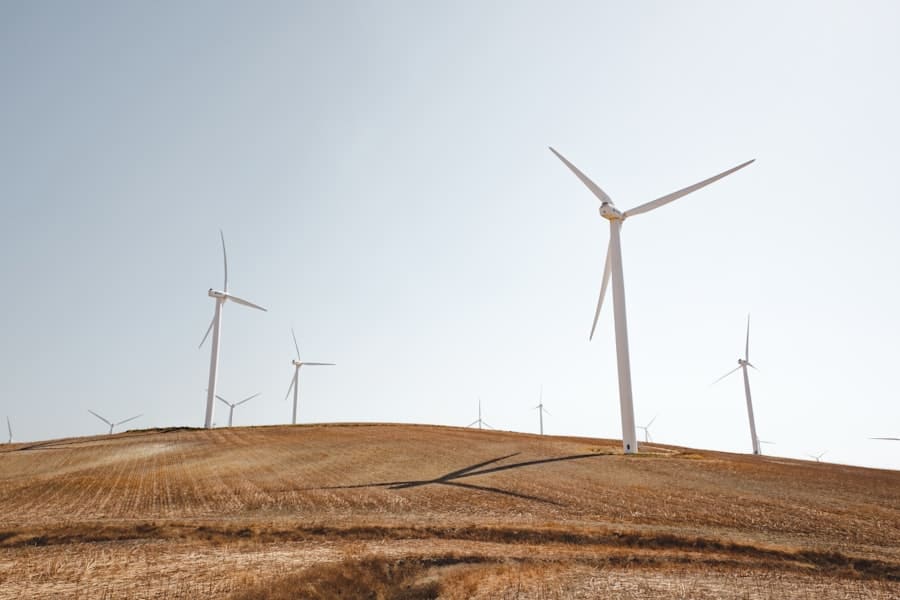In recent years, the demand for energy-efficient laptops has surged, driven by a growing awareness of environmental issues and the need for sustainable technology. As consumers become more conscious of their carbon footprints, manufacturers have responded by developing laptops that not only deliver high performance but also minimize energy consumption. This shift is not merely a trend; it reflects a fundamental change in how we view technology’s role in our lives and its impact on the planet.
The rise of energy-efficient laptops signifies a collective movement towards greener alternatives, where innovation meets responsibility. The evolution of energy-efficient laptops can be traced back to advancements in hardware and software that prioritize power management. With the introduction of energy-efficient processors, improved battery technologies, and optimized operating systems, laptops are now capable of performing demanding tasks while consuming significantly less power.
This transformation is not just beneficial for the environment; it also enhances user experience by extending battery life and reducing heat generation. As a result, energy-efficient laptops have become increasingly popular among students, professionals, and environmentally conscious consumers alike.
Key Takeaways
- Energy-efficient laptops are on the rise due to increasing awareness of environmental impact.
- Laptops contribute to carbon footprints through energy consumption and manufacturing processes.
- Energy-efficient laptops conserve power through efficient hardware and software design.
- Energy-efficient laptops have a positive environmental impact by reducing energy consumption and e-waste.
- Using energy-efficient laptops can lead to cost savings and reduced environmental impact.
Understanding Carbon Footprints and the Role of Laptops
To appreciate the significance of energy-efficient laptops, it is essential to understand the concept of carbon footprints. A carbon footprint measures the total greenhouse gas emissions produced directly or indirectly by an individual, organization, or product throughout its lifecycle. In the context of laptops, this includes emissions from manufacturing processes, energy consumption during use, and disposal at the end of their life cycle.
As technology becomes more integrated into our daily lives, the cumulative carbon footprint associated with laptops can be substantial. Laptops contribute to carbon emissions in various ways. The production phase involves extracting raw materials, manufacturing components, and assembling the final product, all of which require energy and generate waste.
Once in use, laptops consume electricity, often sourced from fossil fuels, further contributing to greenhouse gas emissions. By choosing energy-efficient laptops, consumers can significantly reduce their personal carbon footprints. These devices are designed to operate with lower energy requirements, thereby decreasing the overall demand for electricity and minimizing environmental impact.
How Energy-Efficient Laptops Conserve Power
Energy-efficient laptops employ several strategies to conserve power without compromising performance. One of the most significant advancements is the development of low-power processors that deliver high processing capabilities while consuming minimal energy. These processors are designed to dynamically adjust their performance based on workload, allowing them to operate efficiently during light tasks while ramping up power when needed for more demanding applications.
In addition to hardware improvements, software optimization plays a crucial role in power conservation. Modern operating systems come equipped with advanced power management features that intelligently manage system resources. For instance, they can automatically dim screens when not in use, put hard drives to sleep during inactivity, and limit background processes that consume unnecessary power.
These features work in tandem with energy-efficient components to create a laptop that not only performs well but also uses energy judiciously.
The Environmental Impact of Energy-Efficient Laptops
The environmental impact of energy-efficient laptops extends beyond individual users; it has far-reaching implications for global sustainability efforts. By reducing energy consumption during use, these laptops help decrease the demand for electricity generated from fossil fuels, which are major contributors to climate change. As more consumers opt for energy-efficient devices, the cumulative effect can lead to significant reductions in greenhouse gas emissions on a larger scale.
Moreover, energy-efficient laptops often incorporate sustainable materials and practices in their manufacturing processes. Many manufacturers are now prioritizing recyclable materials and environmentally friendly production methods to minimize waste and pollution. This commitment to sustainability not only benefits the environment but also sets a precedent for other industries to follow suit.
As consumers increasingly demand eco-friendly products, companies are motivated to innovate and adopt greener practices, creating a positive feedback loop that promotes environmental stewardship.
Advantages of Using Energy-Efficient Laptops
The advantages of using energy-efficient laptops extend beyond environmental benefits; they also enhance user experience and provide economic savings. One of the most immediate benefits is extended battery life. Energy-efficient laptops are designed to maximize battery performance, allowing users to work longer without needing to recharge.
This is particularly advantageous for students and professionals who rely on their devices for extended periods while on the go. In addition to improved battery life, energy-efficient laptops often come with lower operating costs. By consuming less power, users can save on electricity bills over time.
Furthermore, many energy-efficient models qualify for various energy-saving certifications, such as ENERGY STAR ratings, which can lead to additional savings through rebates or incentives offered by utility companies. These financial benefits make energy-efficient laptops an attractive option for budget-conscious consumers who also want to make environmentally responsible choices.
The Future of Energy-Efficient Laptop Technology
Advancements in Materials Science and Engineering
Innovations in materials science and engineering are paving the way for even more efficient components that consume less power while delivering superior performance. For instance, advancements in semiconductor technology are leading to the development of chips that operate at lower voltages without sacrificing speed or processing capabilities.
The Role of Artificial Intelligence in Power Management
Moreover, as artificial intelligence (AI) becomes more integrated into computing devices, we can expect smarter power management systems that learn user behavior and optimize energy consumption accordingly. These systems could automatically adjust settings based on usage patterns, ensuring that laptops operate at peak efficiency without requiring user intervention.
A Sustainable Future for Laptops
The convergence of AI with energy-efficient technology holds great potential for creating devices that are not only powerful but also environmentally friendly.
Tips for Choosing an Energy-Efficient Laptop
When selecting an energy-efficient laptop, there are several key factors to consider that can help ensure you make an informed decision. First and foremost, look for models that carry ENERGY STAR certification or similar eco-labels. These certifications indicate that the laptop meets strict energy efficiency guidelines set by regulatory bodies and is designed to minimize power consumption.
Additionally, pay attention to the specifications of the laptop’s components. Opt for devices equipped with low-power processors and solid-state drives (SSDs), as these tend to consume less energy compared to traditional hard drives. Furthermore, consider screen size and resolution; smaller screens generally require less power than larger ones.
Finally, read reviews and user feedback regarding battery life and overall performance to ensure that the laptop meets your needs while remaining energy efficient.
Ways to Reduce Your Carbon Footprint with Energy-Efficient Laptops
Using an energy-efficient laptop is just one way to reduce your carbon footprint; there are several additional practices you can adopt to further minimize your environmental impact. One effective strategy is to adjust your laptop’s power settings to optimize energy consumption actively. Most operating systems offer power-saving modes that can significantly reduce energy usage when the device is idle or performing less demanding tasks.
Another way to enhance sustainability is by extending the lifespan of your laptop through proper maintenance and care. Regularly cleaning your device, updating software, and avoiding unnecessary downloads can help keep it running efficiently for longer periods. Additionally, consider recycling your old laptop responsibly when it reaches the end of its life cycle rather than discarding it in a landfill.
Many manufacturers offer take-back programs or partnerships with recycling organizations that ensure electronic waste is disposed of in an environmentally friendly manner. In conclusion, the rise of energy-efficient laptops represents a significant step towards a more sustainable future in technology. By understanding their role in reducing carbon footprints and recognizing their environmental impact, consumers can make informed choices that benefit both themselves and the planet.
As technology continues to advance, embracing energy efficiency will be crucial in addressing global challenges related to climate change and resource conservation.
If you are interested in learning more about energy-efficient technology, you may also want to check out this article on the best tablets with SIM card slots. These tablets are designed to be more energy-efficient, helping to reduce carbon footprints. Additionally, this article discusses the latest Apple tablets and their energy-saving features. For parents looking to introduce their children to technology in an eco-friendly way, this article provides tips on selecting a child’s first tablet with energy efficiency in mind.
FAQs
What are energy-efficient laptops?
Energy-efficient laptops are devices that are designed to consume less power while still providing the necessary performance for everyday tasks. These laptops are built with components that are optimized for energy efficiency, such as low-power processors and displays.
How do energy-efficient laptops reduce carbon footprints?
Energy-efficient laptops reduce carbon footprints by consuming less power, which in turn reduces the amount of greenhouse gas emissions produced by power plants. By using less energy, these laptops help to lower overall electricity consumption and decrease the environmental impact of computing.
What are the benefits of using energy-efficient laptops?
Using energy-efficient laptops can lead to several benefits, including lower electricity bills for users, reduced strain on power grids, and a smaller environmental footprint. Additionally, these laptops often have longer battery life, allowing for increased portability and productivity.
Are energy-efficient laptops as powerful as traditional laptops?
While energy-efficient laptops may not offer the same level of performance as high-powered gaming or professional laptops, they are still capable of handling everyday tasks such as web browsing, word processing, and multimedia consumption. Many users find that the trade-off in performance is worth the energy savings.
How can consumers identify energy-efficient laptops?
Consumers can identify energy-efficient laptops by looking for ENERGY STAR certification, which indicates that the device meets strict energy efficiency guidelines set by the Environmental Protection Agency (EPA) in the United States. Additionally, manufacturers often provide information about a laptop’s energy efficiency in its specifications.



